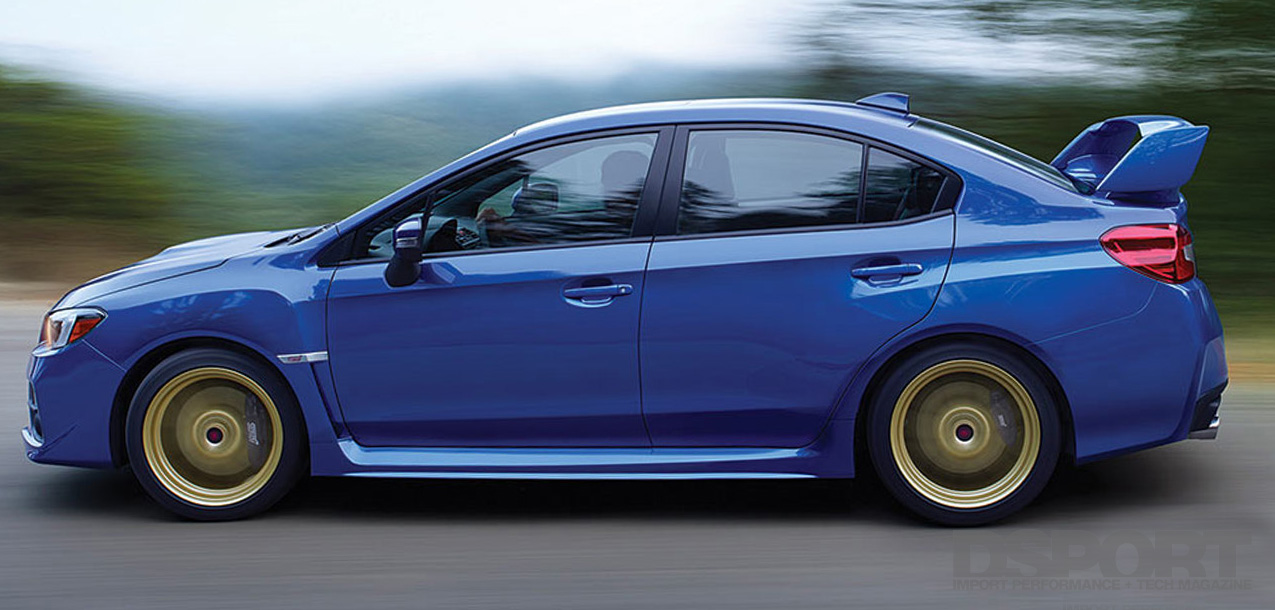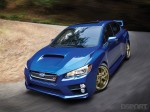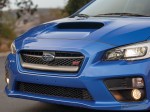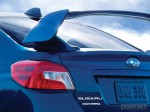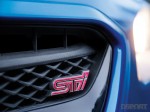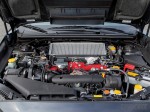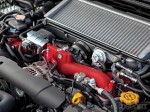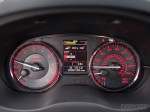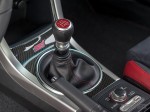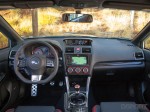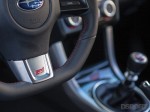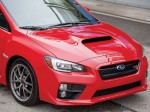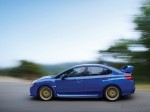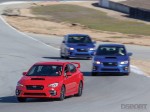Why STI?
 To test the new STI, we sent Magnus to join a group of journalists and the Subaru staff to get some driving impressions. As an experienced Formula Ford driver, he was an ideal candidate to test the new STI. What could be more exciting than testing Subaru’s flagship platform on the twists and turns of Carmel Valley and on the prestigious Mazda Raceway Laguna Seca?
To test the new STI, we sent Magnus to join a group of journalists and the Subaru staff to get some driving impressions. As an experienced Formula Ford driver, he was an ideal candidate to test the new STI. What could be more exciting than testing Subaru’s flagship platform on the twists and turns of Carmel Valley and on the prestigious Mazda Raceway Laguna Seca?
 On the morning of the drive, after a briefing at the luxurious Bernardus Lodge, the group was split, with half proceeding to Mazda Raceway Laguna Seca and the other half hitting Carmel Valley Road. Magnus joined the latter group, taking out a WRX STI Limited Edition. The Limited Edition features an eight-way power driver’s seat, automatic on/off headlights, leather trimmed upholstery, welcome light, power moon roof and the Harman/Kardon premium audio as standard.
On the morning of the drive, after a briefing at the luxurious Bernardus Lodge, the group was split, with half proceeding to Mazda Raceway Laguna Seca and the other half hitting Carmel Valley Road. Magnus joined the latter group, taking out a WRX STI Limited Edition. The Limited Edition features an eight-way power driver’s seat, automatic on/off headlights, leather trimmed upholstery, welcome light, power moon roof and the Harman/Kardon premium audio as standard.
Before hitting the road, the Subaru staff suggested that the vehicle dynamic control be set to the TRAC Sport mode, which deactivates traction control but keeps the torque vectoring active. The SI-Drive was set to S# and the Driver Controlled Center Differential (DCCD) was set to auto.
[pullquote]THE STI’S CHASSIS AND OVERALL HANDLING MADE THE DRIVE FUN AND EXHILARATING[/pullquote]On Carmel Valley Road’s many turns, elevation changes and narrow segments, the STI’s chassis and overall handling made the drive fun and exhilarating. The power was linear through redline, once the boost came on around 3,500 rpm. The throttle and steering were responsive and precise, with excellent feedback through the steering wheel.
Adventures on Track
 After the lunch break, the group made its way to Mazda Raceway Laguna Seca and switched vehicles to the standard STI. In anticipation of the repeated journalist hot laps on the track, the Subaru staff swapped the STIs brake pads with a set from Ferodo and changed to a high-performance brake fluid. The controls were set to TRAC Sport mode, S# and auto just as had been done for the road test. This was the best combination for handling on the track.
After the lunch break, the group made its way to Mazda Raceway Laguna Seca and switched vehicles to the standard STI. In anticipation of the repeated journalist hot laps on the track, the Subaru staff swapped the STIs brake pads with a set from Ferodo and changed to a high-performance brake fluid. The controls were set to TRAC Sport mode, S# and auto just as had been done for the road test. This was the best combination for handling on the track.
Magnus commented, “The STI was awesome on the track. The chassis felt balanced and easy to drive. Thanks in part to the active torque vectoring, the STI was very forgiving too. This instilled greater confidence lap after lap. However, you need to remain cautious. since the STI is so forgiving, it can give novice drivers delusions of grandeur about their driving skills.
[pullquote]THE STI IS SO FORGIVING, IT CAN GIVE NOVICE DRIVERS DELUSIONS OF GRANDEUR[/pullquote]At higher cornering speeds on the track, the suspension felt a little soft. If you lift off the throttle in a high-speed turn, the car had a slight understeer. But when you get back on the throttle, it returned to balanced. You need to really work hard to push the vehicle to a point that puts the chassis and suspension out of control.”
Great Fun
 With the new STI, Subaru has hit a home run with the stiffer chassis, tuned suspension and active torque vectoring technology. The new STI is likely the best handling STI to date. While the track provided many opportunities to experience the new technologies to the fullest, the road stage proved the most fun.
With the new STI, Subaru has hit a home run with the stiffer chassis, tuned suspension and active torque vectoring technology. The new STI is likely the best handling STI to date. While the track provided many opportunities to experience the new technologies to the fullest, the road stage proved the most fun.
The STI is a performance streetcar right off the lot. As with nearly any production car, upgrading the brake pads and making minor suspension tweaks will make track outings much better. Given that the STI has all-wheel drive and numerous electronics to help with handling and maintaining stability and control, we look forward to testing under slippery and low traction conditions in the future. Since the EJ257 is a known variable, we expect to see tuned examples of the new STI on the road shortly after it hits showroom floors.
Changing of the Guard: EJ vs. FA
[pullquote]THE NEW FA FAMILY OF ENGINES SHOWS GREAT PROMISE, POINTING TO A BRIGHT FUTURE FOR THIS ENGINE FAMILY[/pullquote]New and improved doesn’t always mean better. Take Mitsubishi’s 4B11 engine, for example. The all-aluminum 4B11 incorporates plenty of the latest technology in an effort to produce comparable power while satisfying America’s stringent emissions regulations. But, from a pure performance standpoint, the 4B11’s compromises will likely prevent it from ever reaching the achievements of the venerable iron block 4G63 engine that it replaced.
Subaru on the other hand, seems poised to do more. It has already shown that it can produce slightly more power and torque with improved fuel economy, with a half-liter less displacement (EJ255 vs. new FA20 DIT). This shows the potential to offer new, improved and better engines going forward.
The EJ257 has powered the STI in America for a decade. With refinement and tuning, this engine had reached its factory-tuned pinnacle with 305 horsepower and 290 lb-ft of torque. Although Subaru elected to continue with this tried-and-true mill in the 2015 WRX STI, its new FA family of engines shows great promise, pointing to a bright future for this engine family and potentially establishing it as a more highly regarded engine platform.


